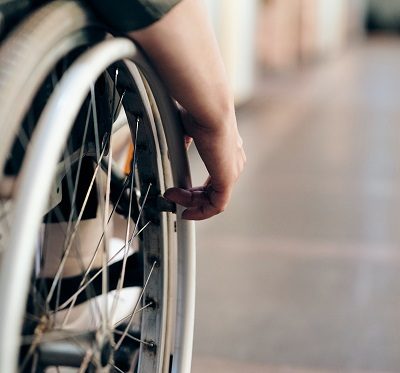

Disability is a word that we hear often. In fact, there are 14.1 million disabled people in the UK. However, it can also be a word we do not necessarily understand. Some conditions are more obvious than others, but this can mean that many disabilities go unnoticed. There are certain signs people expect from physical disabilities. However, some are classed as “invisible disabilities”. This can affect your loved ones, as they may feel their conditions are being overlooked.
Under the Equality Act 2010, a physical disability is defined as a “limitation on a person’s physical functioning, mobility, dexterity or stamina” that has a “substantial” and “long-term” negative impact on that person’s ability to perform normal daily activities.
The effects of a disability vary from person to person depending on the nature of their condition. Some physical disabilities are serious on their own. Others may be mild but are made worse by other diagnoses.
Physical disability presents itself in various ways. Conditions like arthritis may make daily tasks difficult without any obvious signs. Meanwhile, an amputee has clear signs of their disability. However, both conditions impact the person’s ability to perform normal activities.
Physical disabilities can be divided into two significant categories: visible and invisible. An invisible physical disability can have just as much impact on a person’s wellbeing as a visible condition. In some cases, the invisible condition may be more severe.
When people think of physical disability, visible conditions are often what come to mind. Wheelchairs, walking sticks, and injuries all tend to signal that someone has an impairment of some kind. Some visible disabilities are less obvious than others, but they are generally hard to miss.
Examples of visible physical disability include:
Visible physical disabilities are further displayed by the use of assistive equipment.
Many physical disabilities are less obvious. A person with an invisible condition may seem healthy at a glance but actually face considerable obstacles in life. It is likely that they will not regularly use assistive equipment. Unfortunately, invisible disabilities are often overlooked. Some people are quick to assume individuals with invisible disabilities are healthy.
Examples of invisible disabilities include:
These conditions can present significant obstacles for people. For example, walking to the shops can be painful, and morning routines can be a struggle.
Whether their condition is visible or invisible, if your loved ones have a physical disability, they may need extra support around the home or outside. This support could come in the form of mobility aids or some companionship.
It may also be possible to make some adjustments around the home. For example, carpeting could be replaced, and mats taped down to reduce trip hazards. Extra lighting can be put in places where obstacles may be encountered and special cutlery can be bought that is easier to handle.
These steps can help to make life easier for a loved one with a physical disability.
Unfortunately, it is not always possible for us to support our loved ones. We all have our lives to lead and bills to pay, after all. Choosing homecare from Abing could solve this problem.
By opting for homecare, you will be giving yourself and your loved ones additional peace of mind. Carers can visit regularly to help your loved one with daily tasks and even certain errands. They can assist with medication, meals, and moving around the house. Furthermore, they can help transport your loved one to appointments.
Abing offers two main forms of care: domiciliary and live-in.
A domiciliary carer attends your loved one’s property at pre-arranged times to offer additional support. They can visit as often or as rarely as necessary, from multiple times a day to once a month.
Live-in carers provide 24/7 care to your loved one by moving into their home. It is a great alternative to living in a care home. This is because your loved one remains in familiar surroundings whilst benefitting from round-the-clock care.
You can find out more about our services by reading our FAQs or visiting the Help Hub. If you have any questions you can call our helpful team on 0800 008 7000 for further information.